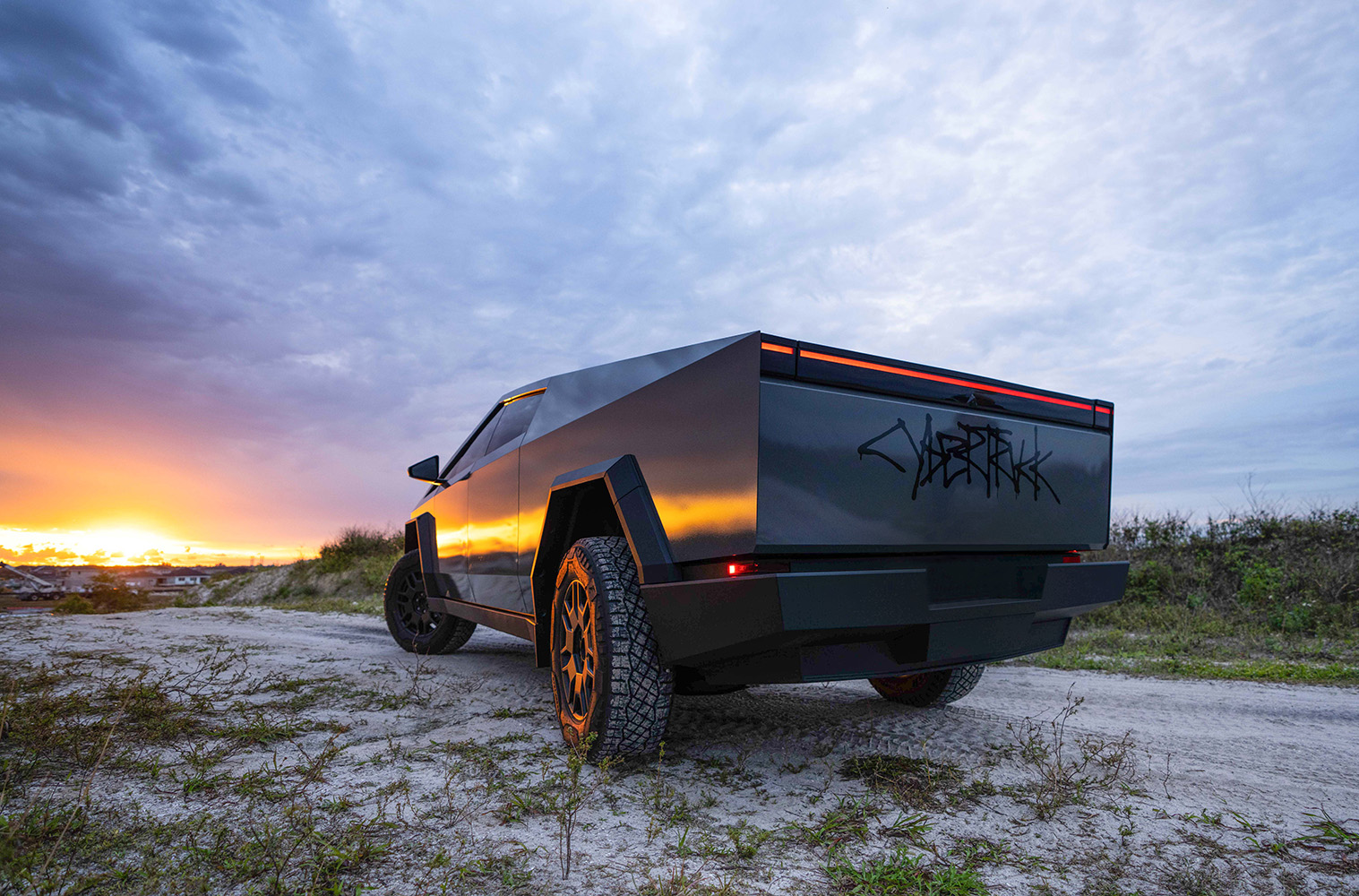We traveled to Palm Beach, Florida, to wrap our 5th Cybertruck. It was awesome to get this experience and really perfect our DIY kit in doing so. In general, we like to test our products over and over again before they hit the shelves to make sure they are easy enough for beginners and are of the most high quality, yet affordable, materials possible. Before going down to Florida for this final testing process, we asked the question amongst ourselves: Will our customers really be able to do this? So, we decided to do something a little risky – but necessary – to put ourselves in the shoes of our customers.
What did we do? We only brought the DIY kit we sell. We didn’t grab any extra vinyl or tools. We knew we were going to be working out of an average size, non-climate controlled house garage in a hot, humid environment. We figured if we can wrap a Cybertruck in a couple of days using only the tools provided and in a pretty basic space that most people will have, then it’s possible for our customers to do so too. In the video above, Ji teaches Destoe how to wrap using our kit. That’s another thing that’s crucial to the testing process: Can non-wrappers do this? Destoe has never wrapped a car, unlike Ji who is a seasoned wrapper. Getting insight from both sides is so important, as they can each see things the other can’t.
Some challenges we faced:
Space
Most people won’t have a huge garage. A two car garage is nice if you’re lucky, but even that can be short a few feet. When wrapping, you need room to work. We had to open the garage for most of the install since that gave us way more space and light.
Temperature
Another reason the door was left open is because the garage wasn’t climate controlled. If left closed too long, it would be sweltering in there. That’s not good for us, but especially not good for the vinyl.
Temp matters when you’re wrapping. You want it to be around room temperature. If it’s too cold, the vinyl will be brittle and break easier. It also makes it harder to adhere to cold surfaces. When it’s too hot, the vinyl gets sticky, gummy, and stretchy. That makes it much harder to control when wrapping. This kit wasn’t made to stretch either, so we really didn’t want to distort anything in the sun. We took a break when the hottest part of the day hit too.
Debris
Because of the door being open, we had a higher chance of debris getting under the film. The way we combatted that is making sure we installed on a calm, non-windy day. We also turned the car around as needed where the panels that were being installed would be farthest into the garage.
—-
Overall, we learned a lot from this process and were able to hone the kit really well from the experience. We installed it successfully, and the video proves it’s possible to do so in a non-professional shop environment. We tried to be as realistic as possible. All that being said, if you can find a climate controlled shop that’s closed off to the elements and has enough space and light for you to work, that would be the most ideal and preferred. As fun and educational as this was, it could have been easier had we had a different environment to work in. So, watch the video, let us know what you think, and stay tuned for more content.
Ji explains how to install the hood in our DIY kit:




